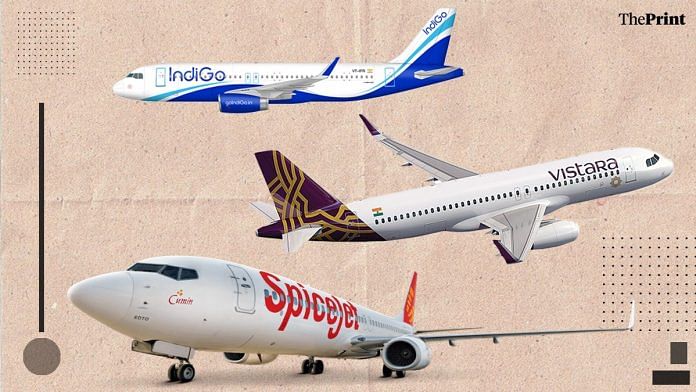
Thank you dear subscribers, we are overwhelmed with your response.
Your Turn is a unique section from ThePrint featuring points of view from its subscribers. If you are a subscriber, have a point of view, please send it to us. If not, do subscribe here: https://theprint.in/subscribe/
With the recent announcement by the Govt. of India about privatizing Air India, along-with a number of new policy initiatives announced recently, the time is now to look at how we can support the new age aviation entrepreneur who is looking to grow her aviation training business and invest in new facilities and routes, catering to the small towns and villages. India needs this momentum to carry forward and not to become a flash in the pan. The opportunity is now where the government of the day is taking bold steps and willing to listen to stake-holders to implement much needed changes!
Imagine you are an entrepreneur planning to start or grow your own flying training school. You have secured all permissions and approvals, you have the local government supporting by providing land at discounted rates or almost free, you have an airstrip, you have the pilots and the engineers with all equipment. What you don’t have? Aircraft or enough of them.
Why? Because the Indian banks won’t touch you unless you leverage your own home, your other assets too to raise money. It is not enough for them that the aircraft itself is a collateral for the loan. Worldwide, and specially in US, the banks support such ventures by launching easy to avail loan options and platforms like https://www.lightstream.com/aircraft-financing .
Never waste a good crisis
Interestingly, when we approach the Indian banks the problem is not just that, and excuses vary from the deal size being too small to not enough collateral. In fairness, these are not mere excuses and some can be argued reasonably like :
- Each small aircraft is around INR 2 Crore/USD 250K give or take, going upto USD 0.5 Million. However, the combined value of the deals can be bigger as these organizations need 7-10 assets at times.
- Collateral related concerns arise due to lack of remarketing avenues for these assets but this is expected to resolve as these organisations become efficient and more training schools and charter companies launch.
- The banks have limited to no understanding of aviation asset management. This is where expert asset managers come in who can create win-win partnerships with the banks and other capital providers.
- The Reserve Bank of India (RBI) does not allow Indian banks to enter the aircraft leasing business yet so while the banks can finance aircraft, they cannot enter the dry lease market. But the only aircraft owners/buyers who manage to get any bank finance are HNIs or organisations buying private corporate jets.
The opportunity is now
A combination of technology and financial innovation could be the solution we need. There is no reason why India cannot create a financing platform to allow such operators to submit online applications, pledge these aircraft as assets and get guaranteed loans or equity on attractive terms. We need a platform serving the “bottom of the pyramid” of Indian aviation, offering easy finance to FTOs and charter operators.
India already has the digital backbone and systems in place for eKYC and it is being widely used in many other areas. The digital portals of Ministry of Corporate Affairs (MCA), Income Tax, CIBIL etc provide good examples of how technology can be used to verify the asset openers/operators. An asset management portal can be built on top of it, requiring the borrowers to submit monthly utilisation reports and allowing regular audit of the assets and their facilities, not to forget the financial due diligence. This scheme can be extended to the RCS (Regional Connectivity Scheme) UDAN beneficiaries too. The aircraft being financed and leased in this manner can be routed through IFSC GIFT City bringing the best of tech and tax benefits together.
The potential opportunities are limitless, to list a few :
- An e-registry of assets can be launched,
- Online trading of assets,
- Marketplace for assets and service providers,
- Marketplace for aircraft financing and leasing
Digitalisation and ‘Atmanirbharta’ (self-sufficiency) are the two mantras of our forward looking government and this project can bring us even closer to these objectives in aviation.
These pieces are being published as they have been received – they have not been edited/fact-checked by ThePrint.
Also read: SubscriberWrites: 2023 could be China’s year if it takes care of these three factors

COMMENTS